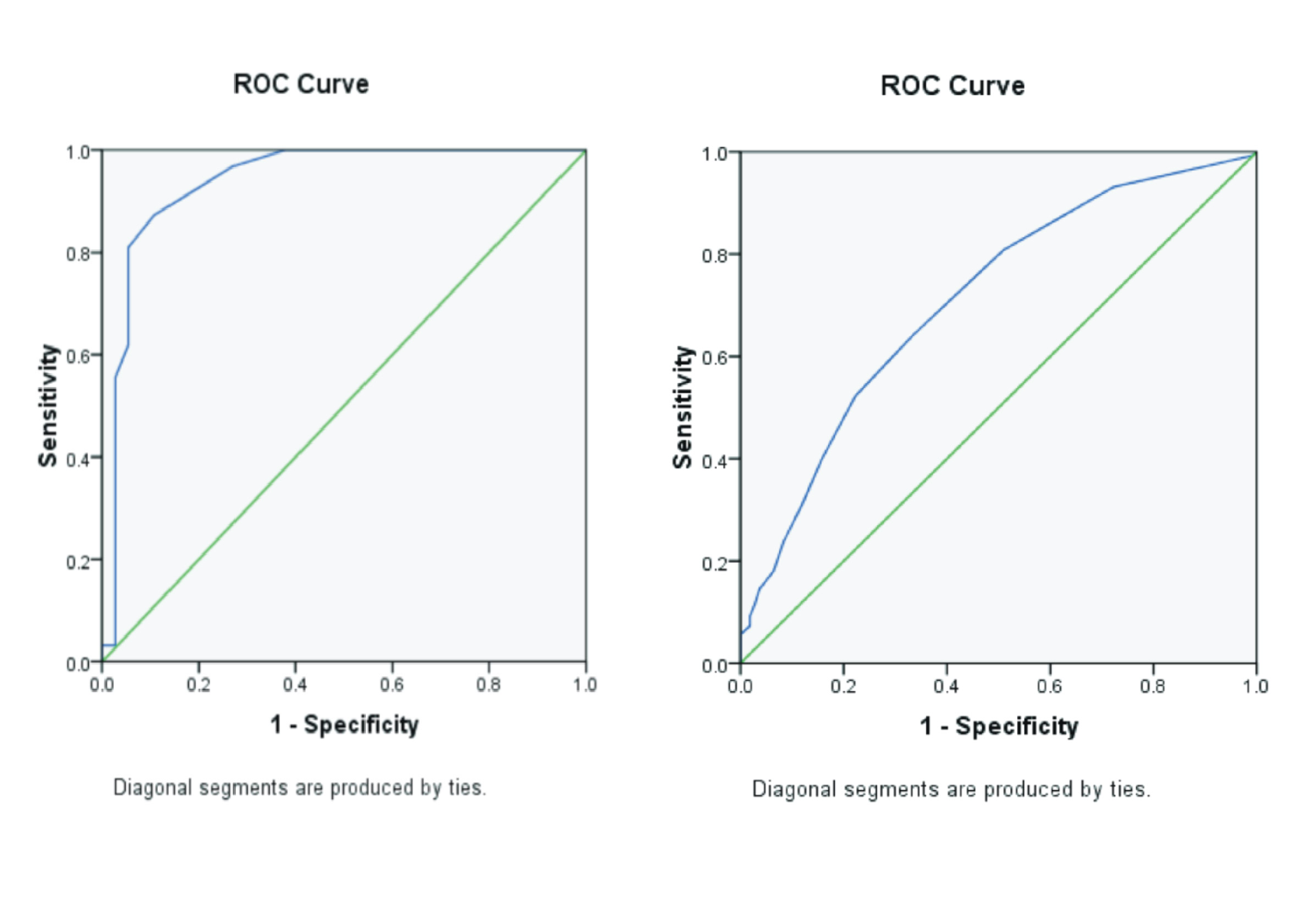THE EFFECT OF 50% EDAMAME BEAN (GLYCINE MAX L. MERRIL) EXTRACTS ON THE SURFACE ROUGHNESS OF HEAT-CURED ACRYLIC RESIN

Background: Edamame bean (Glycine max L. Merril) extract is an alternative to denture cleanser because it contains antifungal and antibacterial compounds, such as flavonoids. However, flavonoids may increase the surface roughness of heat-cured acrylic resin. Purpose: This research aims to analyze the effect of 50% edamame bean extract as a denture cleanser on the surface roughness of heat-cured acrylic resin. Method: Twenty four square shaped heat-cured acrylic resin plates of 10 x 10 x 2 mm were divided into four groups: A1, A2, B1, and B2. Each group was immersed in distilled water (A1 for four days and A2 for 11 days) and 50% edamame bean extract (B1 for four days and B2 for 11 days). The surface roughness was measured using a surface roughness tester TR 220. The data were then analyzed using the Two Way ANOVA test followed by the Tukey HSD test with a significance value of p-value < 0.05. Result: The average surface roughness in heat-cured acrylic resin increased in 50% edamame extract immersion for four and 11 days. The highest increase was experienced in 50 % edamame extract immersion for 11 days with a value of 0.158 μm. In contrast, the distilled water immersion group noted the lowest surface roughness for four days and 11 days. Conclusion: Edamame extract significantly affects the surface roughness of heat-cured acrylic resin after immersion for four and 11 days.
Introduction
Heat-cured acrylic resin is the most commonly used denture base material. Heat-cured acrylic resin, known as acrylic resin, has experienced thermal activation polymerization (Anjai et al., 2018(Anjai et al., 2018)). This material has a gingiva like texture and color, making it aesthetically pleasing, affordable, and easy to manipulate and repair. However, heat-cured acrylic resin is also porous and tends to absorb fluid (Naini, 2015(Naini, 2015)).
Denture bases in contact with saliva formAcquired Dental Pellicle(ADP) and generate plaque formation, which increases the accumulation of microorganisms in the oral cavity, especiallyCandida albicans. This condition results in denture stomatitis (Dama, 2013(Dama, 2013); Wirayuni, 2017(Wirayuni, 2017)). Periodic cleaning using a denture cleanser is essential to prevent this possibility. However, chemical denture cleansers are reported to increase the surface roughness of heat-cured acrylic resin due to its acid content. Studies suggest using natural or herbal ingredients to minimize this drawback (Dewi et al., 2020(Dewi et al., 2020)).
Edamame (Glycine max L. Merril) is a soybean from the legume group, harvested at the peak of ripening before reaching the hardening period. This plant is originally from Japan. Edamame contains essential compounds such as flavonoids, saponins, isoflavones, alkaloids, and tannins, which have antifungal and antibacterial properties (Abd-Alla et al., 2019(Abd-Alla et al., 2019); Abdel-Hadya et al., 2019(Abdel-Hadya et al., 2019)). A previous study proved that edamame extracts at a concentration of 50 mg/ml could inhibit the growth ofCandida albicans(Igboabuchi and Ilodibia, 2018(Igboabuchi & Ilodibia, 2018); Kristiana et al., 2022(Kristiana et al., 2022)). In addition, other studies also show that 50% of edamame extracts effectively inhibit the number of Streptococcus mutans colonies (Devi et al., 2023(Devi et al., 2023)). However, flavonoid compounds in edamame in contact with heat-cured acrylic resin might cause an increase in the surface roughness of heat-cured acrylic resin.
Surface roughness is crucial for dentures since it affects their quality and longevity and induces bacteria adhesion. The ideal cleanser should keep the mechanical and physical characteristics of the denture base resin the same after extended usage (Porwal et al., 2017(Porwal et al., 2017); Sharma et al., 2017(Sharma et al., 2017)). For reference, the surface roughness of a heat-cured acrylic resin denture base is acceptable if the value is not more than 0.2 μm (Onwubu and Mdluli, 2022(Onwubu & Mdluli, 2022); Vinagre et al., 2023(Vinagre et al., 2023)).
The surface roughness of heat-cured acrylic resin dentures generally increases as dimensional changes because of the duration of use (Arafa, 2016(Arafa, 2016)). Those changes might happen during intraoral use. Ningsih et al. (2020)(Ningsih et al., 2020)suggested that after 1 to 3 years of wear. If adjusted to the contact time between the edamame extract and the acrylic resin plate for 15 minutes in short-term soaking), the usage period of one year is equivalent to four days, and three years is equal to a soaking time of 11 days (Arruda et al., 2015(Arruda et al., 2015)). Thus, we chose those periods to analyze the possibility of 50% of edamame extracts changing surface roughness on prolonged use and whether it is still clinically tolerable.
Material and Method
Specimen preparation
Twenty four heat-cured acrylic resin specimens were fabricated according to the manufacturer's guidelines using conventional flasking and pressure-pack techniques. The acrylic resin was placed in a square-shaped cuvette with a size of 10 x 10 x 2 mm (based on the American Dental Association (ADA) specification No. 12). The polymerization process of the resin was carried out by placing the flask in boiling water at 100oC for 20 minutes. The cuvette was left until it reached room temperature before opening. Subsequently, the acrylic sample was smoothed with 500 number scouring paper until the surface was flat and smooth. Then, the acrylic resin specimens were immersed in distilled water for 48 hours and in artificial saliva for one hour.
Preparation of edamame bean extract
The variant of edamame that we used in this research is MF 116 (PT Mitratani Dua Tujuh, Jember, Indonesia). First, edamame beans were dried in an oven at 50oC for one day. The dried edamame seeds were then ground into powder and sieved. Subsequently, maceration was carried out using 70% ethanol solvent at a 1 : 5 (gr/ml) ratio for three days. The obtained filtrate was then evaporated using a rotary evaporator (Siddiq, 2016(Siddiq, 2016)). Finally, 50% edamame bean extract was obtained by diluting 1.5 ml extract in 1.5 ml distilled water.
Immersion process
Twenty-four specimens of acrylic resin (n = 6/group) were distributed into two control groups and two treatment groups, namely A1 and A2 (immersion in distilled water for four days and 11 days, respectively), and B1 and B2 (immersion in 50% edamame bean extract for four and 11 days, respectively). Duration of four and 11 days for immersion was equivalent to using a denture cleanser solution for one year and three years, respectively.
The measurement of surface roughness (Ra)
The surface roughness of the samples before and after treatment was measured using a surface roughness tester TR 220. Measurements are taken on one side of the sample on three different lines. Each sample's average surface roughness (Ra) was then noted and analyzed.
Statistical analysis
The average
Abd-Alla, H.I., Taie, H. a. A., Abd-Elmotaleb, M.M., 2019. Comparative Phytochemical and Investigation of Five Glycine max (L.) Merril Genotypes. Asian Journal of Pharmaceutical and Clinical Research Vol. 12(2), Pp. 523–534.
Abdel-Hadya, H., El-Wakila, E.A., Nasrb, S.M., 2019. Characterization and Evaluation of Antimicrobial and Cytotoxic Activities of Glycine Max Methanol Extract. International Journal of Pharmaceutical Research (09752366) Vol. 11(2), Pp. 418.
Anjai, M., Damiyanti, M., Triaminingsih, S., 2018. Effect of Immersion Time in Denture Cleanser on The Transverse Strength of Heat-Cured Acrylic Resin. Journal of Physics: Conference Series Vol. 1073(6), Pp. 062012.
Arafa, K.A.O., 2016. Effect of Different Denture Base Materials and Changed Mouth Temperature on Dimensional Stability of Complete Dentures. International Journal of Dentistry, Pp. 7085063.
Arruda, C.N.F., Sorgini, D.B., Oliveira, V. de C., Macedo, A.P., Lovato, C.H.S., Paranhos, H. de F.O., 2015. Effects of Denture Cleansers on Heat-Polymerized Acrylic Resin: A Five-Year-Simulated Period of Use. Brazilian Dental Journal Vol. 26(4), Pp. 404-408.
Dama, C., 2013. Pengaruh Perendaman Plat Resin Akrilik Dalam Ekstrak Kayu Manis (Cinnamomum burmanii) terhadap Jumlah Blastospora Candida albicans. E-Gigi Vol. 1(2), Pp. 1-5.
Devi, L.S., Setyorini, D., Hasna, H.S., Ramadhani, V., 2023. Effectiveness of Edamame Extract (Glycine max L. Merril) Against Streptococcus mutans on Orthodontic Appliances Base. Health Notions Vol. 7(2), Pp. 33-37.
Dewi, Z.Y., Insaeni, R.S., Rijaldi, M.F., 2020. Perbedaan Perubahan Nilai Kekasaran Permukaan Plat Resin Akrilik Polimerisasi Panas dengan Plat Nilon Termoplastik setelah Direndam Alkalin Peroksida. Padjadjaran Journal of Dental Researchers and Students. Vol. 4(2), Pp. 153-158.
Dwimartha, A.J., Saputera, D., Wijayanti, T.F., 2018. Efek Ekstrak Jahe Putih Kecil 70% terhadap Nilai Kekerasan Basis Resin Akrilik. Dentin Vol. 2(1), Pp. 40-44.
Fouda, S.M., Gad, M.M., Ellakany, P., Al-Thobity, A.M., Al-Harbi, F.A., Virtanen, J.I., Raustia, A., 2019. The Effect of Nanodiamonds on Candida Albicans Adhesion and Surface Characteristics of PMMA Denture Base Material - An in Vitro Study. Journal of Applied Oral Science: Revista FOB Vol. 27, Pp. e20180779.
Igboabuchi, N.A., Ilodibia, C., 2018. A Study on The Antioxidant and Antimicrobial Activities of Seed and Leaf Extracts of Glycine max (L) Merr. Asian Journal of Research in Botany Vol. 1(1), Pp. 1-8.
Kalasworojati, R.T., Soesetijo, A., Parnaadji, R.R., 2020. Pengaruh Rebusan Minyak Atsiri Daun Sirih Merah (Piper Crocatum) sebagai Bahan Pembersih Gigi Tiruan Resin Akrilik terhadap Kekasaran Permukaan dan Perubahan Warna. STOMATOGNATIC - Jurnal Kedokteran Gigi Vol. 17(2), Pp. 50-53.
Kodir, K., Tanti, I., Odang, R.W., 2017. Surface Roughness of Denture Bases After Immersion in The Fishcake Vinegar Solution. Journal of Physics: Conference Series Vol. 884(1), Pp. 012075.
Kristiana, D., Hidayati, L., Nabil, H.R., 2022. The Effectiveness of Edamame (Glycine Max (L.) Merril) Extract as Acrylic Resin Denture Cleaning on the Number of Candida albicans. Odonto : Dental Journal Vol. 9(1), Pp. 88-94.
Naini, A., 2015. Pengaruh Berbagai Minuman terhadap Stabilitas Warna Resin Akrilik. Stomagtonatic. STOMATOGNATIC - Jurnal Kedokteran Gigi Vol. 8(2), Pp. 74-77.
Ningsih, D.S., Rahmayani, L., Mubarak, Z., 2020. The Duration of using Denture Against Plaque
Onwubu, S.C., Mdluli, P.S., 2022. Comparative Analysis of Abrasive Materials and Polishing System on The Surface Roughness of Heat-Polymerized Acrylic Resins. European Journal of Dentistry Vol. 16(3), Pp. 573-579.
Ozyilmaz, O.Y., Akin, C., 2019. Effect of Cleansers on Denture Base Resins’ Structural Properties. Journal of Applied Biomaterials & Functional Materials Vol. 17(1), Pp. 2280800019827797.
Peiretti, P.G., Karamać, M., Janiak, M., Longato, E., Meineri, G., Amarowicz, R., Gai, F., 2019. Phenolic Composition and Antioxidant Activities of Soybean (Glycine max (L.) Merr.) Plant during Growth Cycle. Agronomy Vol. 9(3), Pp. 153.
Porwal, A., Khandelwal, M., Punia, V., Sharma, V., 2017. Effect of Denture Cleansers on Color Stability, Surface Roughness, and Hardness of Different Denture Base Resins. The Journal of the Indian Prosthodontic Society Vol. 17(1), Pp. 61-67.
Rifdayanti, G.U., Firdaus, I.W.A.K., Sukmana, B.I., 2019. Pengaruh Perendaman Ekstrak Batang Pisang Mauli 25% dan Daun Kemangi 12,5% terhadap Nilai Kekasaran Permukaan (Nilai Kekasaran Permukaan) Basis Akrilik menggunakan Resin Akrilik Tipe Heat Cured). Dentin Vol. 3(3), Pp. 75-81.
Saputera, W.H., Putrie, A.S., Esmailpour, A.A., Sasongko, D., Suendo, V., Mukti, R.R., 2021. Technology Advances in Phenol Removals: Current Progress and Future Perspectives. Catalysts Vol. 11(8), Pp. 998.
Savitri, R.P.A., Naini, A., Parnaadji, R., Kristiana, D., 2022. Pengaruh Lama Perendaman Resin Akrilik Heat Cured pada Ekstrak Daun Tembakau (Nicotiana tabacum) 50% terhadap Perubahan Warna (Effect of Resin Soaking Time on Heat Cured on 50% Tobacco Leaf Extract (Nicotiana tabacum) on Color Change. Padjadjaran Journal of Dental Researchers and Students Vol. 6(3), Pp. 290-297.
Sharma, P., Garg, S., Kalra, N.M., 2017. Effect of Denture Cleansers on Surface Roughness and Flexural Strength of Heat Cure Denture Base Resin-An In vitro Study. Journal of Clinical and Diagnostic Research: JCDR Vol. 11(8), Pp. ZC94-ZC97.
Siddiq, R.H.B.H.F., 2016. Uji Aktivitas Antioksidan Ekstrak Etanol Biji Edamame (Gylcine max L. Merril) dengan Metode DPPH. Jurnal Ilmiah Farmasi Akademi Farmasi Jember Vol. 1(1), Pp. 27-32.
Sofya, P.A., Rahmayani, L., Purnama, R.R.C., 2017. Effect of Soft Drink Towards Heat-Cured Acrylic Resin Denture Base Surface Roughness. Padjadjaran Journal of Dentistry Vol. 29(1), Pp. 59-64.
Vinagre, A., Barros, C., Gonçalves, J., Messias, A., Oliveira, F., Ramos, J., 2023. Surface Roughness Evaluation of Resin Composites after Finishing and Polishing Using 3D-Profilometry. International Journal of Dentistry, Pp. e4078788.
Wirahadikusumah, A., Pratiwi, D., Andany, H.C., 2020. Pengaruh Minuman Kemasan terhadap Kekasaran Basis Gigi Tiruan Sebagian Lepasan (Kajian Berdasarkan Perbedaan Derajat Keasaman). Jurnal Kedokteran Gigi Terpadu Vol. 2(1), Pp. 27-30.
Wirayuni, K.A., 2017. Akumulasi Streptococcus mutans pada Basis Gigi Tiruan Lepasan Plat Nilon Termoplastik dan Resin Akrilik. Interdental Jurnal Kedokteran Gigi (IJKG) Vol. 13(2), Pp. 28-31.
Wirayuni, K.A., Saputra, I.M.H.D., 2021. Immersion of Heat Polymerized Acrylic Resin Dental Base in Arak Bali Against Surface Roughness. Interdental Jurnal Kedokteran Gigi (IJKG) Vol. 17(1), Pp. 22-26.
Copyright (c) 2025 Journal of Vocational Health Studies

This work is licensed under a Creative Commons Attribution-NonCommercial-ShareAlike 4.0 International License.
- The authors agree to transfer the transfer copyright of the article to the Journal of Vocational Health Studies (JVHS) effective if and when the paper is accepted for publication.
- Legal formal aspect of journal publication accessibility refers to Creative Commons Attribution-NonCommercial-ShareAlike (CC BY-NC-SA), implies that publication can be used for non-commercial purposes in its original form.
- Every publications (printed/electronic) are open access for educational purposes, research, and library. Other that the aims mentioned above, editorial board is not responsible for copyright violation.
Journal of Vocational Health Studies is licensed under a Creative Commons Attribution-NonCommercial-ShareAlike 4.0 International License














































